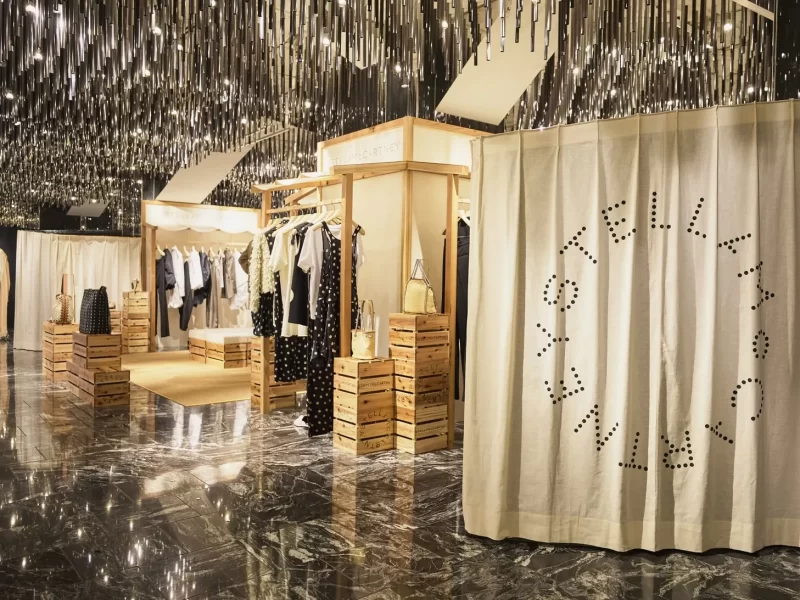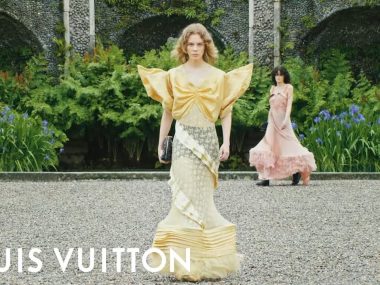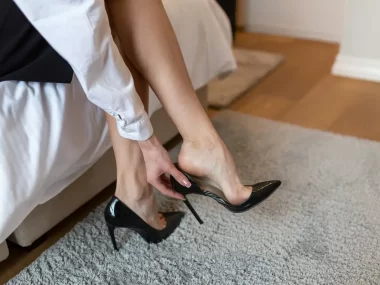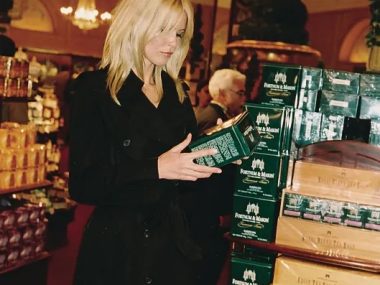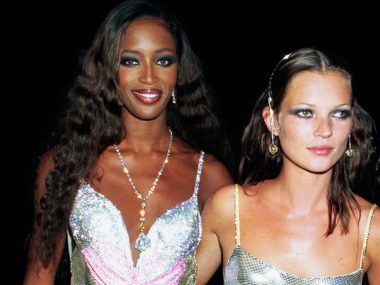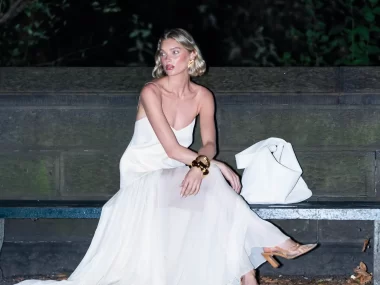|
Neubauer Coporation
Getting your Trinity Audio player ready...
|
What is Stella McCartney thinking and acting now? For several years, George V Magazine has asked Stella, a leader in sustainable fashion, questions based on the ever-changing situation. This time, we asked her about the word luxury, which she would like to reconsider, the use of waste, which is difficult and costly, and how to deal with green washing.
GVM: Every year we hear more and more news about the global environment being in a critical state. Do you think it is possible to enjoy fashion and protect the global environment at the same time?
Stella McCartney (hereinafter referred to as Stella): Since the establishment of the brand, I have not used leather, feathers, fur, or exotic leather. This is a big step to protect Mother Earth. Did you know that 80% of the Amazon’s deforested area is directly linked to cattle farming for beef and leather? The livestock industry accounts for 14.5% of global greenhouse gas emissions, more than the aviation industry as a whole.


The 2024 Summer Runway Show in Paris, COP28 in Dubai, and the Stellar’s Sustainable Market held at Main Store celebrated such innovations and the innovators who support them. I love the passion of the community and wanted to introduce leather alternatives made from plants, grapes and apples, as well as our other cutting-edge technologies, so we did it here. Innovation is essential to moving towards a greener future, so by sharing our work we hope to inspire those in the fashion industry and beyond and hoping.
GVM: The spring/summer campaign was shot at a recycling factory to promote the transition to a recycling-oriented society. Utilizing waste begins with collection and sorting, rebuilding the supply chain, and technological innovation to ensure the quality of materials, but these steps are difficult and costly. However, I would like to know again about the significance of utilizing waste.
Stella: I want to achieve the goal of stopping extracting materials from Mother Earth and only using recycled and regenerative materials so that I can contribute to her regeneration. It’s much easier and cheaper to go with traditional options, but it’s not Stella if you don’t invest in next-generation materials.
We are very proud of the evolution of our iconic Falabella bag, using recycled materials for the body, recycled brass for the handle, and a recyclable aluminum chain. This is just the beginning and I am constantly pushing my team to improve our sourcing and supply chain.
Anyone who knows me knows that I hate waste. Every second, a truckload of clothing is sent to a landfill or incinerator. Fast fashion produces more than 100 billion pieces of clothing each year, but less than 1% of that is recycled.
For our Summer 2024 campaign, we wanted to highlight the beauty that can be found in waste and inspire hope for a more circular future. The collection is our most sustainable yet, made from 95% environmentally friendly materials, including recycled deadstock fabrics from NONA Source. Using recycled materials requires less than half the energy needed to produce virgin fiber and eliminates the need to extract as many resources from the earth.
The campaign features the world’s first hoodie made from Protein Evolution’s BioPure technology. This technology is an amazing innovation that combines enzymes and technology to transform plastic waste into infinitely recyclable polyester. I support this through the SOS Fund Sustainable Investment Fund, which I co-founded, and I couldn’t be more excited about its potential.
GVM: About materials made from waste. In a collaborative project with Veuve Clicquot that started with supply chain construction, we developed a product using grape residue and pre-consumer and post-consumer cork in just 18 months. What was particularly difficult?
Stella: Having been in this business for over 23 years, I can tell you that any material innovation comes with challenges. Fortunately, at Veuve Clicquot I have found a partner who shares my passion for sustainability, innovation and regeneration. Madame Clicquot herself is a female pioneer, and we know that the grapes we use for our next generation material to replace leather come from the vineyards in Reims, France, that she purchased nearly 200 years ago. I like it very much.
We were already working with VEJA on a grape-based alternative to animal leather, which they partnered with in collaboration with Veuve Clicquot to create this material in 18 months. They share our vision of creating the most luxurious products with the least impact on the planet. This alternative material is made from 80% plant-based, renewable and recycled materials.
GVM: What does luxury mean to you?
Stella: True luxury means being able to wear the clothes and accessories we want to wear, knowing that they are not harming living things or Mother Earth, and being proud to pass them on to the next generation. It’s a timeless product that they too will want to wear. We all need to understand that true luxury requires valuing not only design, traditional craftsmanship and high quality, but also material innovation and pioneering thinking that creates sustainable solutions. . That’s what makes our work rare and special.
GVM: Regarding the technologies and techniques you focus on, in addition to the latest technologies, if there are any traditional techniques that are currently being reevaluated that you are interested in, please let us know. For example, what role do traditional techniques play in your creative activities?
Stella: A perfect example is the brand’s iconic Falabella bag, which was launched 15 years ago and was the origin of the vegan bag. We have re-trained Italian tanners and other artisans to work with alternative materials to animal hides. Falabella is cruelty-free and features the same level of craftsmanship as any other luxury bag. Falabella’s signature chain is attached to each hand-punched bag using organic cotton string. This uses the traditional techniques and techniques our customers demand, while keeping an eye on the recycled, bio-based and sustainable solutions our planet needs.
GVM: I hear that more and more companies and people are refraining from communicating about sustainability for fear of being labeled as greenwashing. What do you think about this trend? What advice do you have for people who are afraid of criticism?
Stella: The best way to avoid greenwashing is to only communicate what we have done or are doing. By actually doing what you say, not just what you say, your voice will be honest, transparent, and trustworthy. Actions are more persuasive than words!

